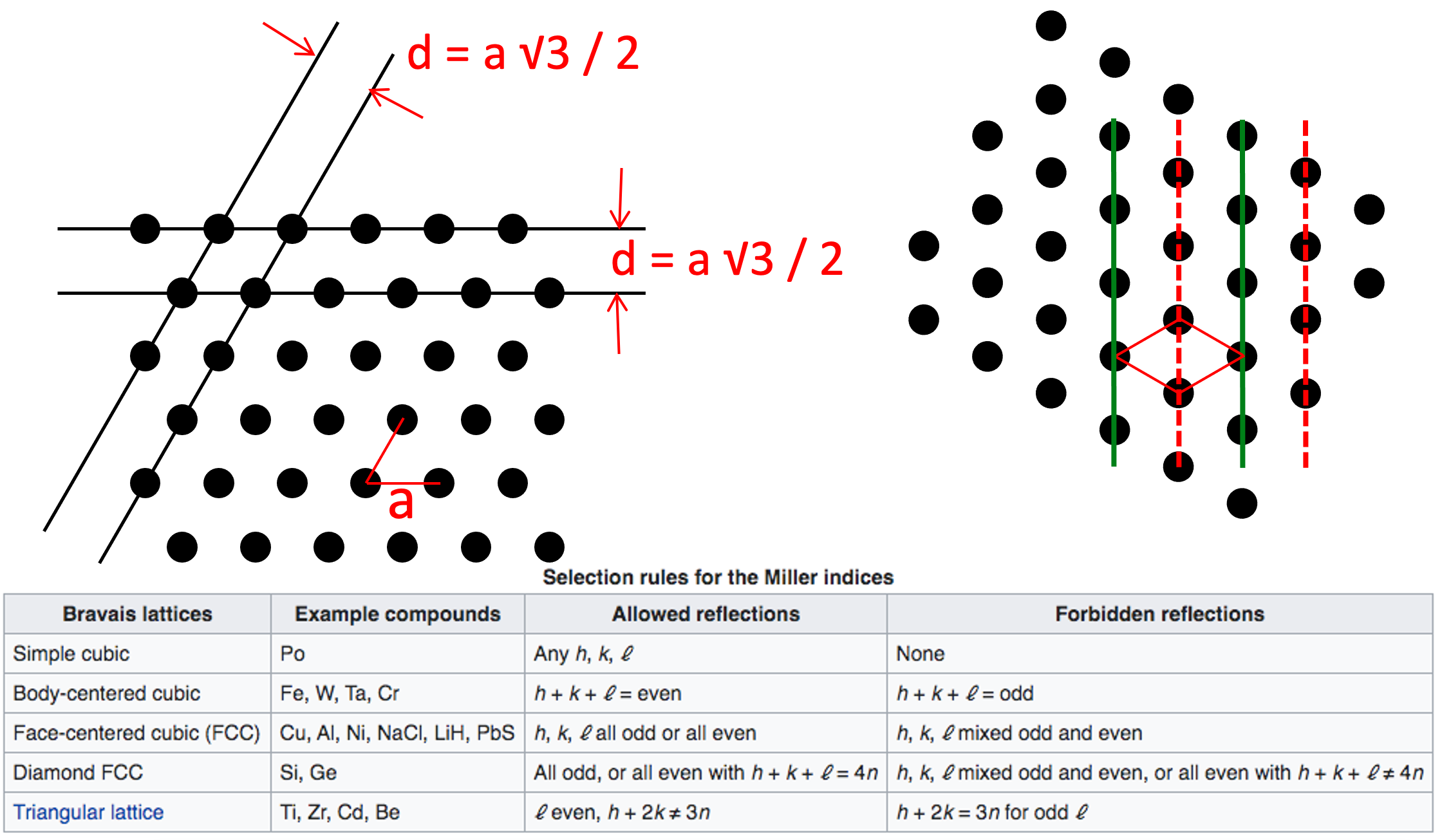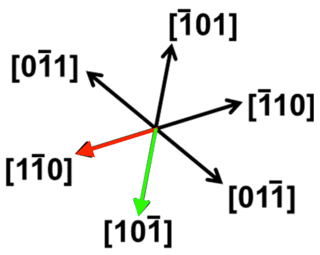I happen to have a slide about something similar, so I'll adjust it and paste below.
If the red and green lines are the (acute) 2D lattice vectors for the 2D hexagonal lattice on the fcc(111) face, we can call those directions [1, 0] and [0, 1]. Then "orange" direction could be called [1, 1]. As far as I can tell from the two images below, in the 3D lattice those directions could be called either [1, -1, 0] & [-1, 0 1] or [1, -1, 0] & [1, 0 -1].
Either way, add them together to get the orange arrow and it's [0, -1, 1] or [2, -1, -1] and the rules for allowed diffraction are all odd or all even and the orange line does not satisfy that
Before the intuitive answer, let's look at the selection rules for diffraction We can trust them while we learn to understand them.
Bravais lattices Allowed reflections Forbidden reflections
Simple cubic Any h, k, ℓ None
Body-centered cubic (BCC) h + k + ℓ = even h + k + ℓ = odd
Face-centered cubic (FCC) h, k, ℓ all odd or all even h, k, ℓ mixed odd and even
Diamond FCC All odd, or all even with h, k, ℓ mixed odd and even
h + k + ℓ = 4n or all even with h + k + ℓ ≠ 4n
Triangular lattice ℓ even, h + 2k ≠ 3n h + 2k = 3n for odd ℓ
For the orange-arrow case in your question let's look again:

Now examine my old slide:
For your plane wave with a projected period on the surface equal to the [1, 1] direction, we can see that it passes TWO rows of equally spaced atoms. The reason that the selection rule says this diffraction is forbidden is that diffraction from the alternating rows of atoms cancel each other; they are 180 degrees out of phase.

Trying to get the correct [hkl] notation for directions of the hexagonal lattice on the fcc(111) surface. These seem to :


Sources left: Diffusive Atomistic Dynamics of Edge Dislocations in Two Dimensions, right: Reconstruction of steps on the Cu(111) surface induced by sulfur





